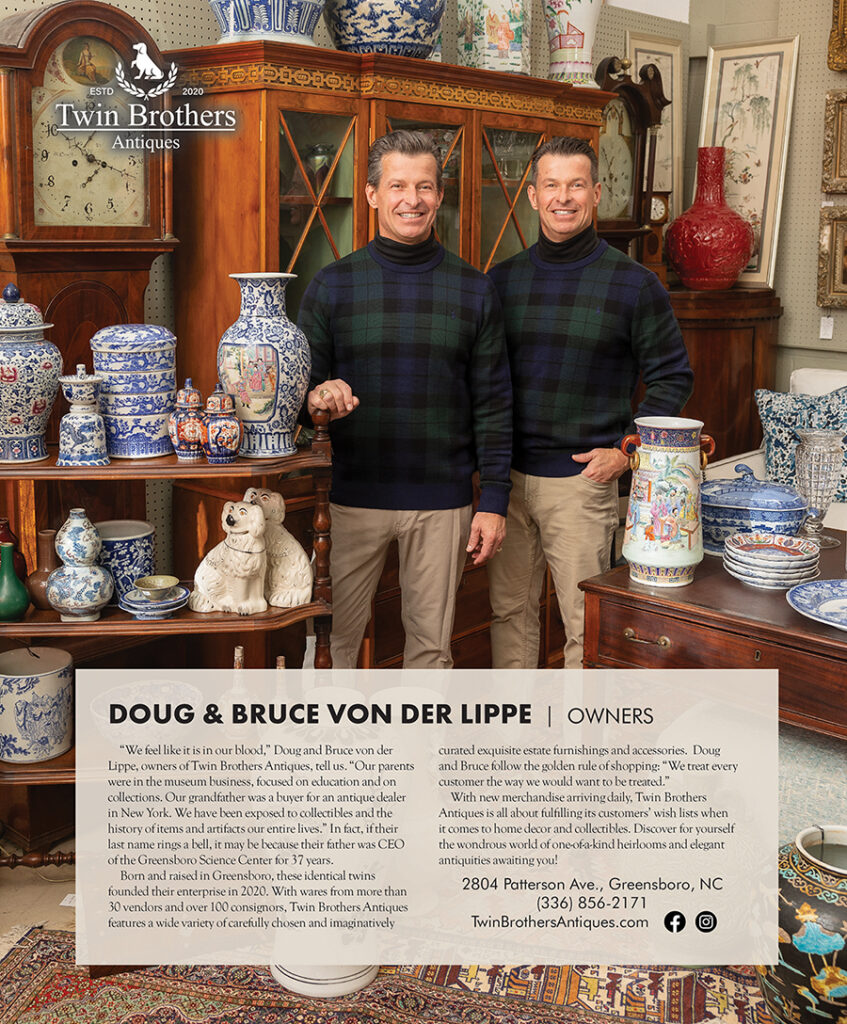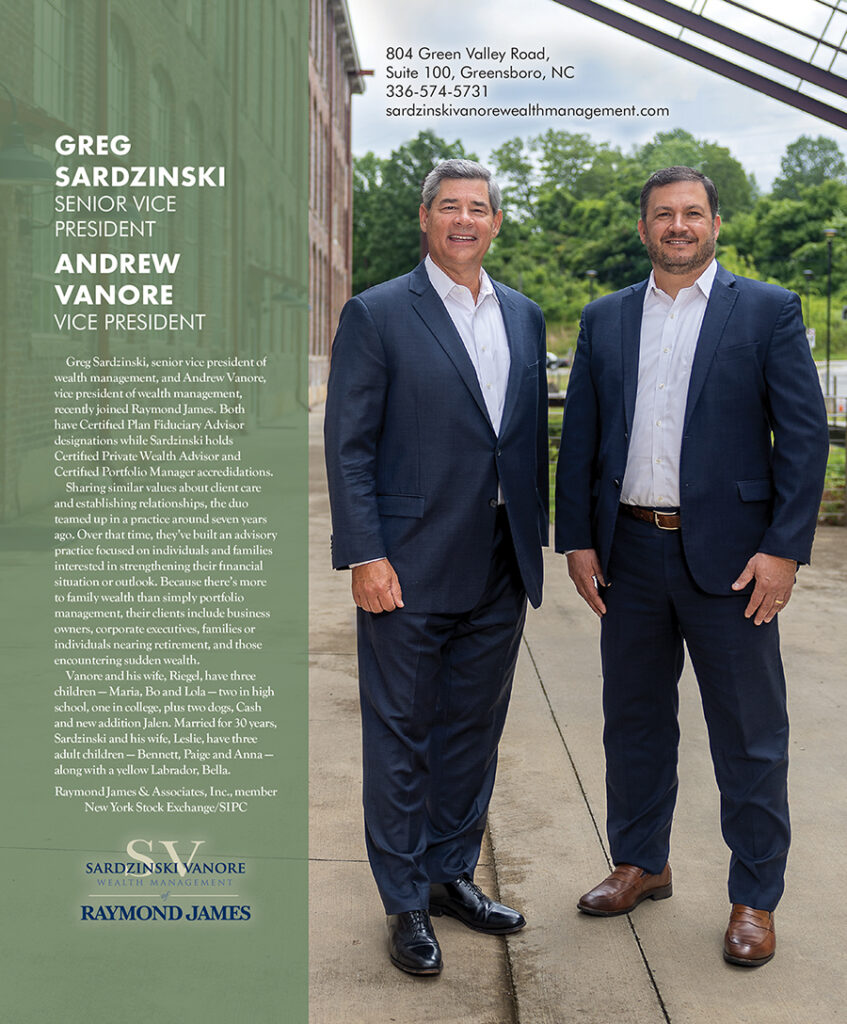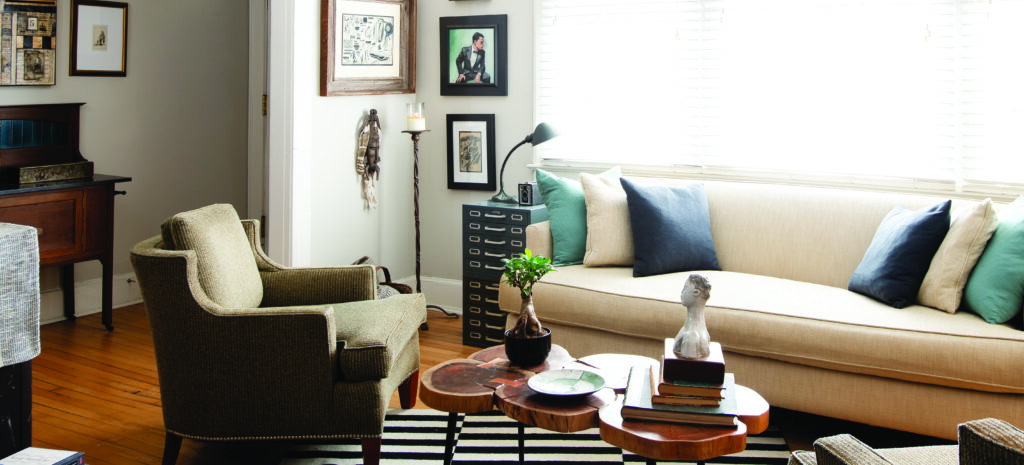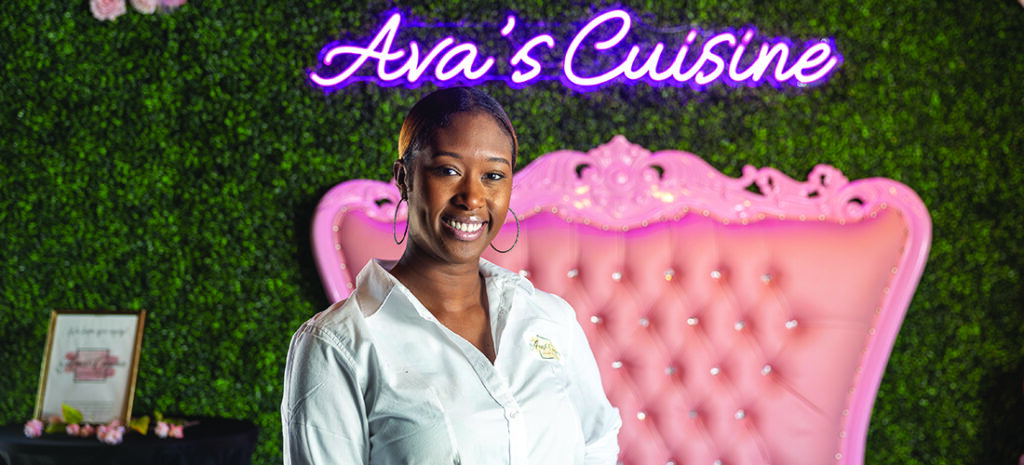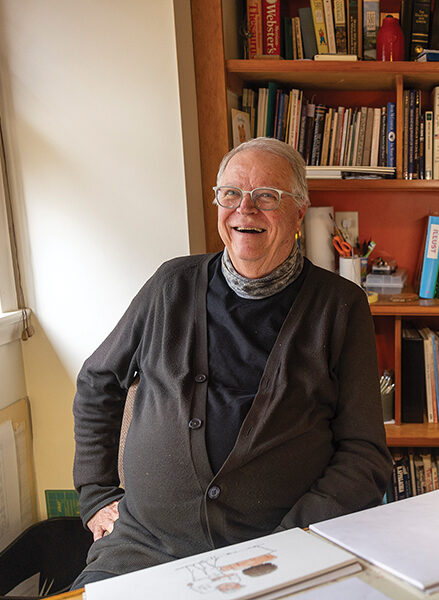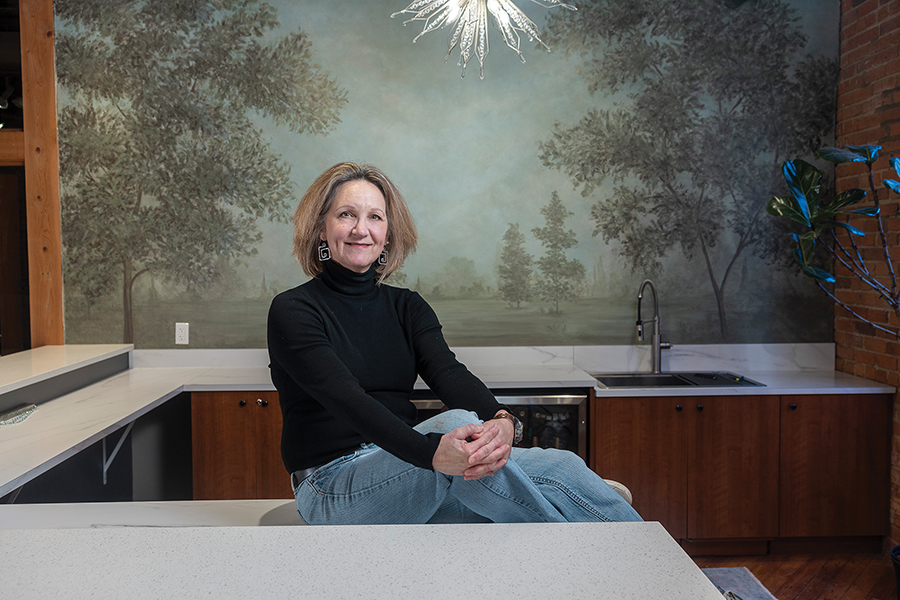Cornered By Flavor
Appetizing aromas draw foodies to two new restaurants reclaiming a busy Greensboro crossroads
By Maria Johnson
Photographs by Bert VanderVeen
The pandemic stuck a fork in the restaurant life of Latham Park.
The Iron Hen — a lunch-brunch favorite that leaned on fresh, local ingredients — and its chain-driven neighbor, Dunkin’ Donuts, always good for a pop of caffeine and sugar, both shuttered during the shutdowns.
Local bellies rumbled for salads dotted with creamy goat cheese medallions and for confections crusted with rainbow sprinkles — though not necessarily at the same time.
Now, a new crop of flavor has sprung up at the corner of West Wendover Avenue and Cridland Road, thanks to two locally-owned restaurants: Saint Louis Saveurs, which fills the former Dunkin’ space, and Ava’s Cuisine & Catering, which occupies the Iron Hen’s old roost.
Both places serve down-home chow with a delicious twist: The owners come from different places, so their flavors are distinctly diverse, and their menus expand the rich, multi-ethnic flavor of Greensboro.
Still, their stories are remarkably similar.
For Mouhamadou “Mo” Cissé and his wife, Bator, both in their early 40s, home is the west African country of Senegal, specifically the coastal city of Saint Louis, which is about the size of Greensboro and which they pronounce the same way the region’s French colonizers did: san lou-EE.
Saveurs means “flavors” in French, so, literally, the Cissés serve up the flavors of their hometown, most notably the warm, homey notes of garlic — an ingredient brought by the French — mingling with the sweet earthy tang of onions and peppers.
The piquant aroma hovers outside the restaurant, signaling that this is no slapdash joint; someone inside knows their way around the kitchen.
“The experience, the love of cooking and making something really, really good, that’s what makes the difference,” Bator says. “It’s all about the depth of the flavor.”
You can taste her practiced hand in dishes such as djolof, a fried-rice entree made with your choice of fish, chicken or lamb. Each protein is cooked slowly and separately.
“That’s the traditional way of cooking back home, for safety, so the food is well-cooked,” says Mo, adding that the method concentrates flavor.
The protein dictates which kind of homemade onion sauce is used in the dish, and each meat gets its own array of vegetables. For example, the lamb is paired with carrots, peas and corn, while the fish swims with cabbage, carrots, yams and eggplant in season.
Yassa, made with white rice, uses some of the same ingredients as djolof, but the outcome is singular. “The order of cooking is different,” says Mo. “And the quantities of ingredients are different.”
Saint Louis tweaks some American favorites, too.
“Our burger is not going to be the burger you buy anywhere else, I can guarantee that,” Mo says proudly.
The Saint Louis Special Burger boasts a thick beef patty that’s mixed with jalapeños, eggs and cheese before hitting the griddle to coax out the juices.
The restaurant’s cheesesteak is a savory marriage of marinated beef or chicken, melted cheese, and a generous drizzle of homemade vinaigrette-based sauce on a sub roll. Customers yearning for crunch can ask for a garden finish of crispy lettuce or cucumber.
“That’s something you don’t see everyday on a cheesesteak,” says Bator.
Their down-home offerings extend to a zesty homemade ginger-pineapple drink and a scarlet-hued hibiscus tea known as bissap.
Bator, who directs the kitchen — “I want the food to be 100 percent” — learned to cook as a child. “At the age of 12, I started cooking lunch for the whole family,” she says.
Even more important in her business, she absorbed the Senegalese ethos of teranga, which means warmth and hospitality. She embodies teranga with her megawatt smile.
She also reflects the discipline she learned by playing center on her high school and university basketball teams. Wearing a sporty pullover and a Nike ball cap over her tied-back hair, she radiates the confidence of an athlete who knows how to give and take in the paint.
“I was always a hustler, and I always believe in myself,” she says. “Anywhere I am, I’m gonna make it.”
Mo, who earned a Master’s degree in accounting in his hometown, worked for a bank before coming to the United States for more education and work opportunities.
Bator left her extended family and a three-bedroom home, where she had a housekeeper, to join him in New York City. Life was tougher than they expected. Mo worked as a gas station clerk, and Bator rung up orders at Burger Heaven on Manhattan’s Upper East Side, traveling an hour by train from a small apartment in the Bronx, then logging 13-hour shifts before commuting home.
“It was really, really hard,” she says. “I believe God sent us a test.”
A Senegalese business contact suggested that Mo move to Greensboro, where he lived, and take classes at N.C. A&T. The couple relocated and again found themselves working menial jobs and unable to save money. Their first daughter, Aminata, was born.
Something had to change.
Bator had an idea.
Newfound friends in Greensboro paid her to do what she loved to do anyway: create extra plates of Senegalese food, which is known throughout Africa for its quality.
What if she and Mo opened a restaurant, something small, mostly take-out?
Mo was on it. He scouted spaces for rent.
The Dunkin’ niche, an appendage of a Circle K gas station at the bustling intersection, was empty of anything that suggested food prep. The couple traveled to restaurant auctions to pick up kitchen equipment.
They opened Saint Louis Saveurs for lunch and dinner in 2022.
Ten to 15 percent of their orders come through food delivery services such as DoorDash and UberEats. Evenings find drivers standing outside the restaurant, waiting for their fragrant dispatches.
Walk-ins come from all over.
Some work at nearby Moses Cone Hospital; in the medical offices along Wendover Avenue; or in downtown Greensboro, a few minutes away.
Some customers are visiting Greensboro and discover Saint Louis by googling African restaurants.
Others live nearby, in the well-heeled neighborhoods of Irving Park, Latham Park and Fisher Park.
“Being in this restaurant, I realize that a lot of people in Greensboro travel,” says Bator. “I have people coming in here, telling me about my country. I’m so happy to hear that. Greensboro is a very diverse place. That’s why I love it,” she says.
Another mainstay of the restaurant has been the African community in Greensboro, estimated to be at least 9,000 people, according to the Center for New North Carolinians at UNCG.
Papa Seck, a Greensboro resident who’s also from Senegal, eats at the restaurant every few weeks. To enter, he steps under an awning depicting the distinctively scalloped Faidherbe Bridge in Saint Louis and pulls on a fat “D-shaped” door handle, a vestige of doughnut days gone by.
On the bright yellow walls — the color appears in the Senegalese flag and is also a favorite of the Cissés’ younger daughter, Fatima — Bator and Mo have hung reminders of home: a wooden map of the world, where they sometimes point out Senegal to customers, and colorful, flat baskets woven by Bator and arranged in an artful display.
Feeling more comfortable already, Papa Seck slides into his native language. Behind the counter, Bator catches the lilt of home and returns his greeting with enthusiasm.
Teranga.
Papa orders his usual, mafé, a white-rice dish laden with bites of beef, cabbage, carrots and yams, all under a creamy peanut sauce made sassy by onions, garlic and peppers.
Waiting at one of a few bar-height tables, Seck says there is no other place like Saint Louis in this area.
“Reminds me of home,” he says.









